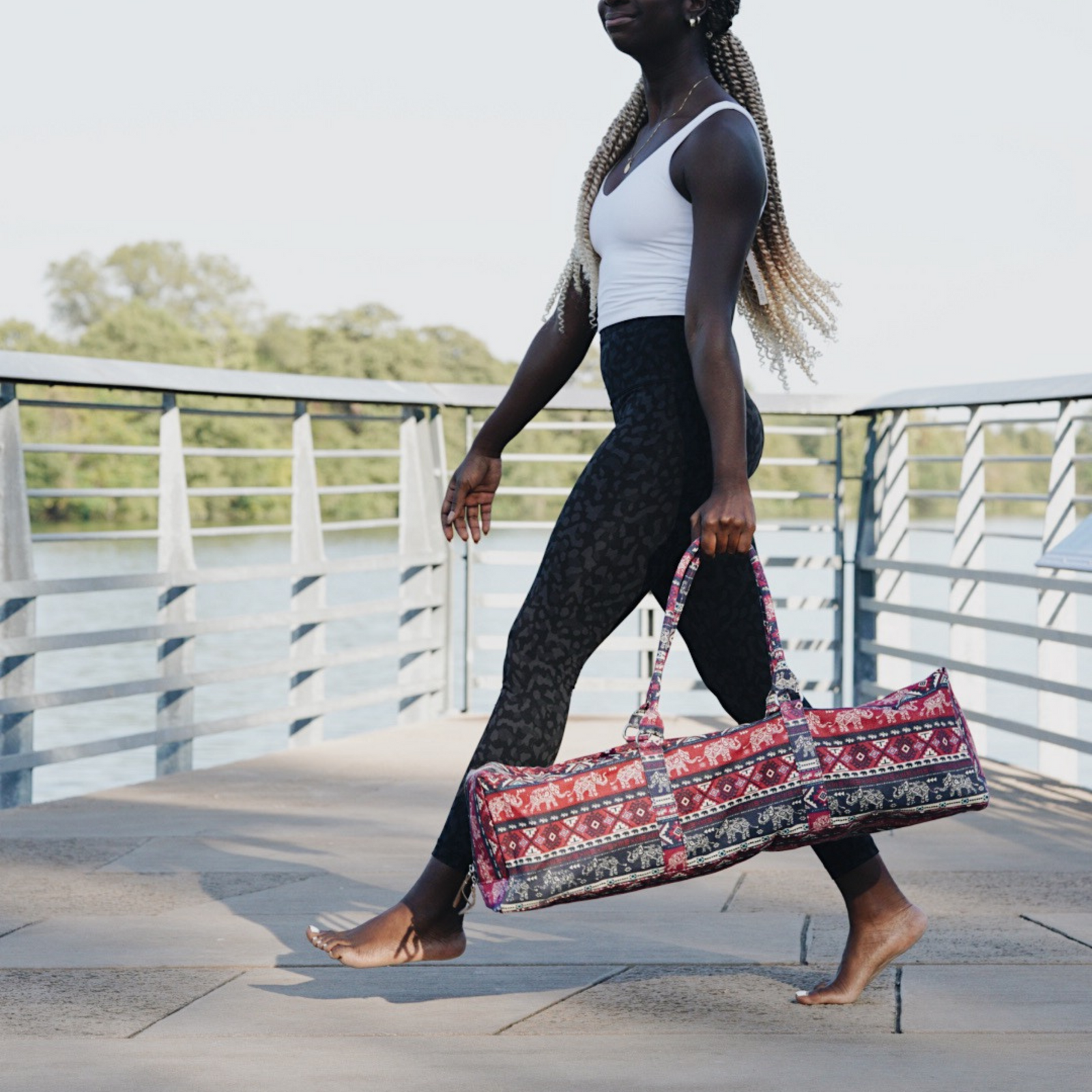Whether you’re a seasoned yogi or brand new to the practice, you’ve probably come to realize that “yoga” is a broad title. A quick search on Google will likely bring up a multitude of yoga styles and variations, all of which often have vague descriptions and titles — so it can be overwhelming to decide which is right for you, especially if you’re not familiar with their differences. While most yoga styles use the same physical postures and foundational techniques, each one serves unique purposes and appeals to different people. To help you get started, we’ve put together a cheat sheet that outlines some of the key characteristics of each yoga variation so that you can explore for yourself and decide which practice best suits your needs.
1. Hatha
Simply put, Hatha is an umbrella term for any of the physical practices of yoga that combine movement and breath. If you’re new to yoga, Hatha may be a good starting point for you, as most classes offer a slow-paced, gentle introduction to the foundational yoga postures in a non-intimidating setting. Or, if you’re simply looking for a more relaxed practice, Hatha may also be a good fit for you, as the goal of the practice is to concentrate on breathing and maintaining poses, which often creates a meditative state. While it may not always leave you feeling sweaty and exhausted, Hatha will undoubtedly leave you feeling calm and rejuvenated at the end of each session.
2. Vinyasa
Similar to Hatha, Vinyasa is a broad term to describe a variety of classes — no two are completely alike. However, all Vinyasa classes share a common theme of combining rhythmic breathing with a sequence of physical postures. The term "Vinyasa" is derived from the Sanskrit term “nyasa,” which means "to place," and the prefix “vi” means "in a special way" — referring to the consciousness given to each movement and breath. Through a series of poses called sun salutations, Vinyasa offers dynamic movements that allow you to achieve greater alignment with your physical body. Also commonly referred to as “flow” yoga, Vinyasa is a seamless, fast-paced meditation that encourages an increased awareness that links each action to the next.
3. Ashtanga
Founded by Pattabhi Jois in the 1960s, Ashtanga yoga is a dynamic, challenging, and athletic style of yoga that marries breath to movement. Ashtanga translates to “eight limbs” in Sanskrit, referring to the eight limbs outlined in the Yoga Sutras. Through six sequences of poses, each focusing on a different aspect of the body, students can move through the practice independently and at their own pace — and the series of poses are always performed in the same order, so if you’re looking for a yoga style that’s more repetitive and predictable, Ashtanga may be the one for you. With an emphasis on daily practice and continuous flow, Ashtanga is all about bringing heat to the body and building strength, so if you’re already active and accustomed to more vigorous workouts, try out Ashtanga for a challenging and rewarding experience.
4. Yin Yoga
While many of the physical yoga variations fall under the “yang” style (aka the dynamic, quick-paced practices such as Vinyasa and Ashtanga), the opposite style of yoga, known as “Yin,” is equally as important. Slow-paced and restorative, Yin yoga focuses on holding passive, seated positions for several minutes at a time in order to release tension in the tissue, or fascia, of the body. Counteracting the more vigorous yang styles of yoga, Yin yoga allows you to slow down and turn inward, bringing awareness to your mind and the physical sensations of your body. Although it may not be as sweaty and tiring as Vinyasa or Ashtanga, Yin yoga can be equally as challenging — both mentally and physically — as you hold poses for longer periods of time and breathe through discomfort. So, for those of you looking for a way to unwind after a long week, or if you’re simply wanting to stretch out any sore muscles, Yin yoga is bound to leave you feeling relaxed and rejuvenated.
5. Bikram Yoga
A sub-type of hot yoga, Bikram is a popular yoga style practiced in a room that is heated to approximately 95-100 degrees Fahrenheit (~40 degrees Celsius) with a humidity level of 40% — so you definitely don’t have to worry about whether or not you’ll break a sweat! While it may sound intense, the heat helps detoxify the body, promote fat burn, and loosen tight muscles, so if you’re struggling with flexibility, Bikram may be a helpful yoga variation to help deepen your stretch. With a series of 26 poses performed in a specific order over a 90-minute session, Bikram classes are the exact same wherever you go, so you never have to worry about being caught off guard. However, just like in any yoga practice, make sure you are listening to your body and know your limits — and, of course, make sure to properly hydrate before and after class!
While these are just five of the most common types of yoga practices, there are so many more variations to explore, and every one offers something unique and beneficial. Just like any kind of workout, the most important thing is to find the style that best suits your needs and preferences. One of the biggest hurdles to starting your yoga journey (and sticking to it) is finding the variation that you most enjoy — but with an open mind and a willingness to step out of your comfort zone, you’re bound to find a yoga style that leaves you feel stronger, both mentally and physically.








